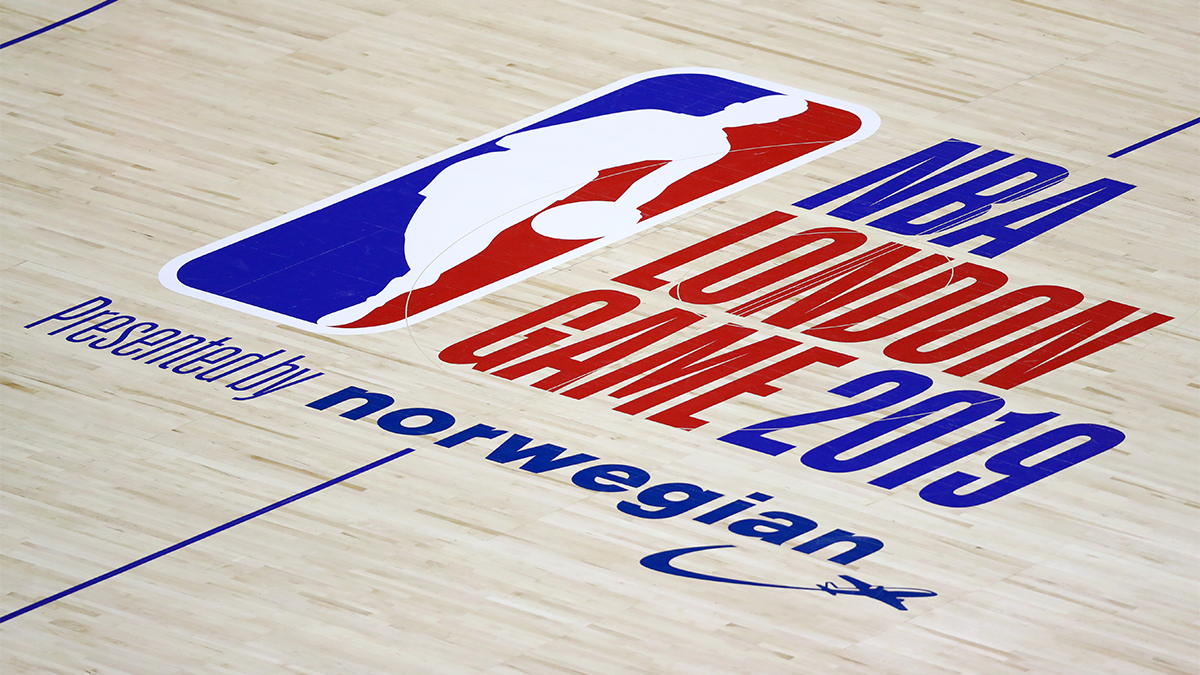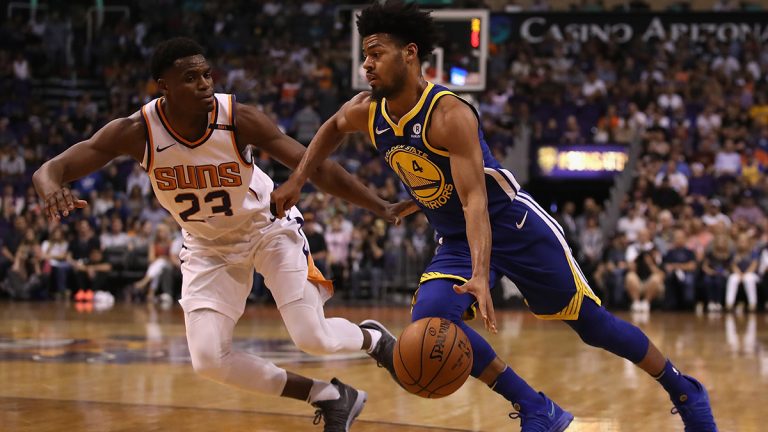NBA realizing the power of new markets for talent and revenue
Why this matters
The NBA has grown within itself and given fans across the world what they need to interact and keep up with the game no matter where they are.
In the American sports lexicon, there is a constantly used phrase that delimits the perceived legitimacy of all but the top leagues in the country: “four major sports.” Fans use it to cast aside those sports they see as unimportant or financially unviable and lift up the import of those they cheer.
But as society and the economy become increasingly globalized, a sport’s status in the U.S. is not the only consideration. In this regard, the NBA is developing into a power despite the lesser footing it still holds domestically.
With an 82-game schedule and games played in arenas, the NBA generated $7.4 billion during the 2016-17 season, the third-most revenue among the “four major sports” plus the English Premier League, though that total represents a 25-percent increase from the prior season. It exists behind pro football and baseball based on the money it earns in the U.S.
New television deals signed in 2016, as well as rising attendance numbers, continue to push basketball forward. However, the NBA’s biggest growth is taking place around the globe.
Since its inception, basketball has been a multinational game. While most know basketball was invented by a Canadian, James Naismith, in the U.S., The Washington Post notes the sport quickly spread around the world by educators and coaches from the YMCA. Foreign-born players have been some of the most heralded in NBA history, starting with Henry Biasatti in 1946.
“The NBA succeeded in monopolizing basketball globally in ways the YMCA never could, thanks to its marketing of stars, the universality of its up-tempo, athletic game and its inclusion of a labor force that reflects its international fan base,” Lindsay Sarah Krasnoff wrote for the Post.
Today, millions of people across the world play and many look to the NBA as the pinnacle of the game.
According to The Associated Press, 300 million people play basketball in China and the game is growing in India — two key growth markets. In addition, the NBA estimates 1 billion people had access and opportunity to view the NBA Finals last season — or one in every seven humans. The growth in Asia has been spurred by the popularity of NBA stars from that part of the world such as Yao Ming, as well as the marketing power of sportswear companies with which superstars sign megadeals to sell signature shoes. Others, such as the American-born Jeremy Lin, whose family is Chinese, have continued to build interest in Asia as a result of their heritage.
“When you look at China, India and Africa, you’ve got about 60 percent of the world's population in those three places,” NBA Deputy Commissioner Mark Tatum told USA TODAY. “So we're putting a lot of time and energy in how we become the No. 1 sport in those countries and those continents."
After he was signed by the Toronto Raptors in mid-February, Lin told media, “I’m very proud to represent Asian people on a global platform and on a global scale.” He added the opportunity to live in a city with a vast population of Asian immigrants like Toronto is tremendous at this point in his career.
Devoting resources to outside the North American market is paying off for the NBA. Forbes reported NBA programming garnered more than 1 billion unique viewers during the 2017-18 season, and 35 percent of visitors to the league’s official website came from outside North America.
In addition to live, scheduled broadcast television and the ability to interact with teams and players on social media, a big reason for the growth of the NBA’s digital audience is NBA League Pass, the league’s streaming and cable package that allows fans to watch every game. In the United Kingdom, League Pass is growing. In China and Japan, companies such as Tencent and Rakuten are developing their own versions of the product in partnership with the NBA to make it available for basketball fans in Asia.
Many international players who arrived in America to play in the NBA attributed their ability to do so to those who came before them and the efforts of the league to pave the way for young, foreign-born players.
“So many players are coming over here and playing at a high level, in the best league in the world,” Latvian-born Dallas Mavericks big man Kristaps Porzingis told Sports Illustrated’s Andrew Sharp. “It’s good to see. It means we're doing something right as a basketball system.”
The league recognized early the care necessary to help players through the culture shock and bureaucratic processes of becoming a professional in a new land. To address the issues, the league organized an aggressive International Basketball Operations department.
“The NBA’s investment in international basketball has been a story of social responsibility that doubles as excellent business strategy,” Sharp wrote, referencing the Basketball Without Borders program, which led to NBA events in 28 countries across six continents and helped uncover young superstars such as Joel Embiid and Pascal Siakam. "... I want to make sure I show every African kid out there that Africa is coming, and we're on the way and we want to be better,” Siakam told Bleacher Report's Maurice Bobb. “And make sure that Africa is known as a continent that creates great players."
Another advantage the NBA maintains is a focus on North America when it comes to expansion, which helps cultivate an international fan base in close enough proximity to reasonably integrate into its schedule and infrastructure. They have played games in Mexico City on and off since 1997 and host a franchise in Toronto already, in addition to the Vancouver Grizzlies, an expansion team from the 1990s which was moved to Memphis in 2001. On the other hand, the NFL has spent the majority of its resources creating a partnership with the United Kingdom, playing multiple games in London each season at Wembley Stadium.
“I think the foundations are definitely laid (in London) from a fan perspective, and we feel very confident in the fanbase, its passion and its commitment,” NFL VP of International Mark Waller said in 2018. Major League Baseball also has a franchise in Toronto, the Blue Jays, and has, in recent seasons, played season-opening series across the globe.
To begin the 2019 season, MLB will have the Seattle Mariners play the Oakland Athletics in Tokyo on March 20-21. In addition, the Boston Red Sox and New York Yankees will play in London June 29-30. The Arizona Diamondbacks and Colorado Rockies will play spring training exhibition games in Monterrey, Mexico in March. This tracks with baseball’s use of the globe from a scouting perspective, but it represents an overextension of resources in terms of laying the groundwork for the league growth.
Leagues worry about travel when they consider franchises overseas, meaning far-off games in Asia and Australia do little to groom new fanbases for prospective expansion organizations. The NBA, on the other hand, keeps most of its professional contests in North America while using other means of marketing and community-building to reach a broader global fan base.
Of course, the league most closely associated with global reach is the English Premier League. However, the NBA has higher salaries and a closer relationship with fans than the EPL despite a more limited viewership reach. Both leagues are trending upward when it comes to fan engagement, but the EPL is doing it more traditionally, with a television audience of nearly 500,000 per game on NBC alone during the 2017-18 season, a 14 percent increase over the prior year.
The NBA is attacking marketing differently than its counterpart in the United Kingdom but still pales in comparison to the EPL when it comes to TV viewership.
The NBA has grown within itself and given fans what they need to interact and keep up with the game no matter where they are. International fans see themselves in the players from around the world taking over the game today, and the league continues to invest in those athletes without putting too much into markets they cannot support.
Brendon Kleen is a senior journalism student at Arizona State University.






